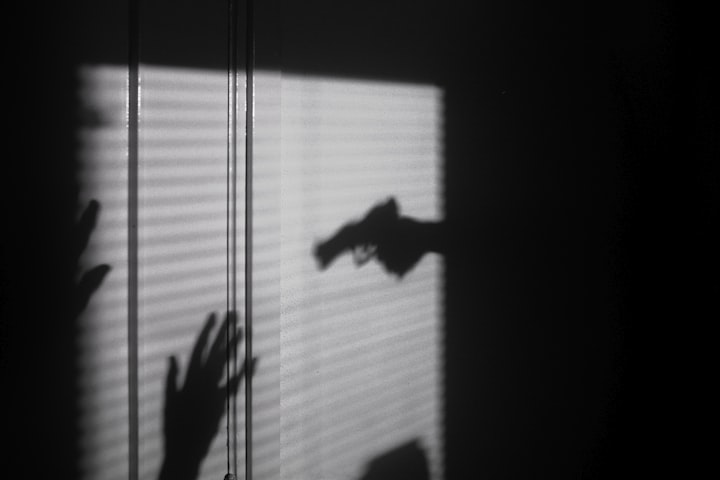The unsolved LaSalle Street triple homicide
One of the coldest homicide cases in Indianapolis

On December 1, 1971, a man named John Karnes arrived at 1318 N. LaSalle Street in Indianapolis. Karnes and others became concerned when business partners Bob Gierse and Bob Hinson didn’t show up for work at their microfilm company. The men owned a business called B&B Microfilm Service, also in Indianapolis at 4446 E. 10th Street.
Hinson and Gierse also lived together at the LaSalle residence. Louise Cole, their secretary, saw her two employers the previous evening. She said both men had stayed late working on an important project. Cole assumed they would show up later.
However, others became concerned when they couldn’t locate the two business partners. After being unable to reach the men at work or home, Karnes showed up at their home to do a wellness check. He entered the home after finding the door ajar. He described his findings to police as inhuman.
Three men were brutally stabbed on Lasalle Street
Hinson and Gierse were both in their bedrooms. Someone had struck them in their heads and then cut their throats from ear to ear. There was also a deceased third man in the bathroom named James Barker. He was friends with both victims and worked in sales for a microfilm company called Bell & Howell. Someone had also savagely killed him. Two of the men were nearly decapitated.
The police located a bloody boot print left behind by the killer. Whoever killed the three men already had a head start on getting away with this triple homicide.
Indianapolis Police officers immediately began looking at different motives. Why would anyone kill these men? It’s possible the victims knew their killer because there weren’t any signs of forced entry.
The police also think the crime may have involved more than one killer. It seemed unlikely that one person could have killed all three men.
Secretary Louise Cole said she had left the office the previous evening around 5:15 p.m. She said Hinson and Gierse were both working when she left. The police also interviewed a man named Theodore B. Uland who said he spoke to Hinson at 9 p.m. and then Gierse around 9:30 p.m.
The police thought Uland had the strongest motive for killing the men. Hinson and Gierse previously worked for Uland at Records Security. It’s alleged the men stole equipment and at least one client from Uland before leaving him. According to retired Indianapolis Police officer Robert Snow, Uland wanted to find someone to kill the men and then collect on their life insurance policies. Snow mentioned Uland as a suspect in his book titled "Slaughter on North LaSalle."
Uland may have also had a financial motive because he carried a life insurance policy on his two former employees. The police discovered another angle. This one involved the hard-partying lifestyles of the victims.
They often frequented bars after work and got into fights with other bar patrons. Police also learned the men were involved in an unusual contest. They competed to see who could sleep with the most women. At the end of every month, the men recorded their conquests. However, they died before recording November’s numbers. Apparently, Barker led with 25, then Girse with 20 and Hinson trailing with 18. Did a jealous boyfriend or husband kill the men? It seemed possible.
A woman who was seeing Hinson said she stopped by the house to visit him at 1 a.m. She left after no one answered the door. If true, this left a window between
9:30 p.m. and 1 a.m. for someone to commit the murders. During the 1970s, forensics didn’t exist. This meant the police had to knock on doors and speak to hundreds of people. The LaSalle Street case went cold.
This murder mystery will likely remain unsolved
This upcoming December will mark the 49-year-anniversary of the LaSalle Street triple homicide. Today, the police have arrested no one. Unfortunately, the police lost bloody sheets and other pertinent evidence containing crucial DNA evidence.
In 2000, the daughter of a man named Fred Harbison, was going through her late father’s lockbox and found a sealed letter. Her father, who once worked for Theodore Uland, wrote a confession letter. His daughter read it. Harbison claimed Uland became angry with Hinson and Gierse because they wanted to ruin him. Uland hired Harbison to kill the men for their life insurance.
Harbison claimed Uland never paid him for killing the two men. Today, the murders of these men remain unsolved. And I don’t forsee anyone ever facing justice for killing Bob Gierse, Bob Hinson or James Barker. Including Uland and Harbison, most of the people involved with this case are now deceased.
About the Creator
Marc Hoover
Marc Hoover is a Hooper award winning columnist for the Clermont Sun newspaper in Ohio. Contact him at [email protected]. Marc also has a podcast called Catch my Killer.






Comments
There are no comments for this story
Be the first to respond and start the conversation.